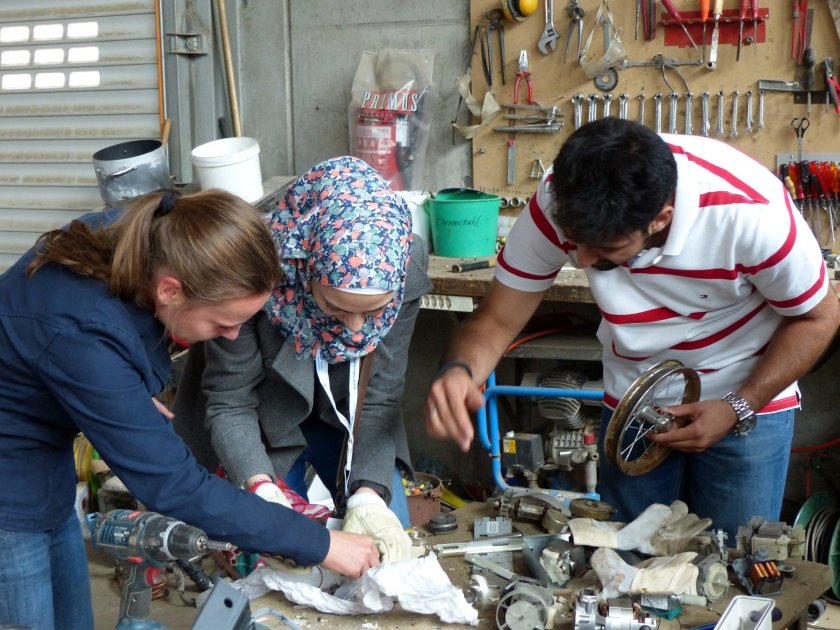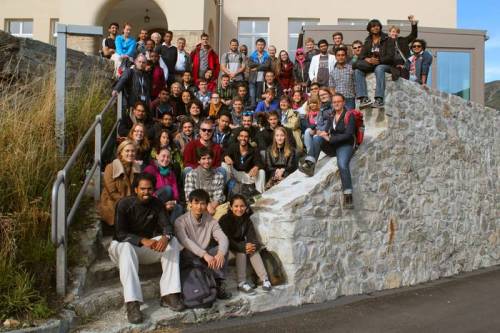Call for Applications open: International Summer University on Energy, Falera/Switzerland

Solar Solutions, hand made by the students. And they all work. © HZB

Group-picture from last year's ISU. © HZB
Excellent Master, Diploma, and PhD Students from all over the world from different disciplines are invited to participate in the international summer university ISUenergy2015. The ISUenergy2015 will take place from Aug. 23rd - Sept. 4th 2015 in Falera/Switzerland.
The interdisciplinary summer university focuses on solar energy under a multitude of perspectives: from the physics of photovoltaics and solar thermal energy to solar architecture and electromobility, smart grids and the economic and political aspects of renewable energy use. These topics will be treated in lectures, evening talks, practical workshops, and group projects.
This summer university is internationally established since 2009 and provides a unique setting for students to enrich their knowledge on energy topics. Splendid network opportunities among the students and with the lecturers will be offered.
More information on ISUenergy 2015 and FAQ:
http://www.helmholtz-berlin.de/events/isu-energy/
Applications are invited from March 1st , 2015: http://www.helmholtz-berlin.de/events/isu-energy/applications/
Early bird fee applications will be valid before May 15th, 2015.
Further questions: isue@helmholtz-berlin.de
arö
-
BESSY II shows how solid-state batteries degrade
Solid-state batteries have several advantages: they can store more energy and are safer than batteries with liquid electrolytes. However, they do not last as long and their capacity decreases with each charge cycle. But it doesn't have to stay that way: Researchers are already on the trail of the causes. In the journal ACS Energy Letters, a team from HZB and Justus-Liebig-Universität, Giessen, presents a new method for precisely monitoring electrochemical reactions during the operation of a solid-state battery using photoelectron spectroscopy at BESSY II. The results help to improve battery materials and design.
-
A warm welcome: Summer students start at the HZB
On 1 July 2024, 18 summer students from 15 nations started their work at HZB. Until 23 August, they will be supervised in various research teams and take on their own small project. For many students, this is their first contact with research.
-
HySPRINT Photovoltaics Lab inaugurated
After around four years of renovation, photovoltaics research groups moved into their offices in Kekuléstraße on 20 June 2024. With the reopening, the building has also been given a new name that makes the research more visible: it is now called HySPRINT Photovoltaics Lab.
